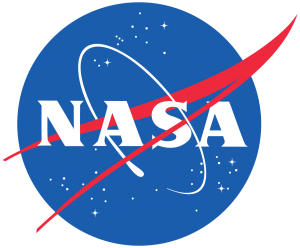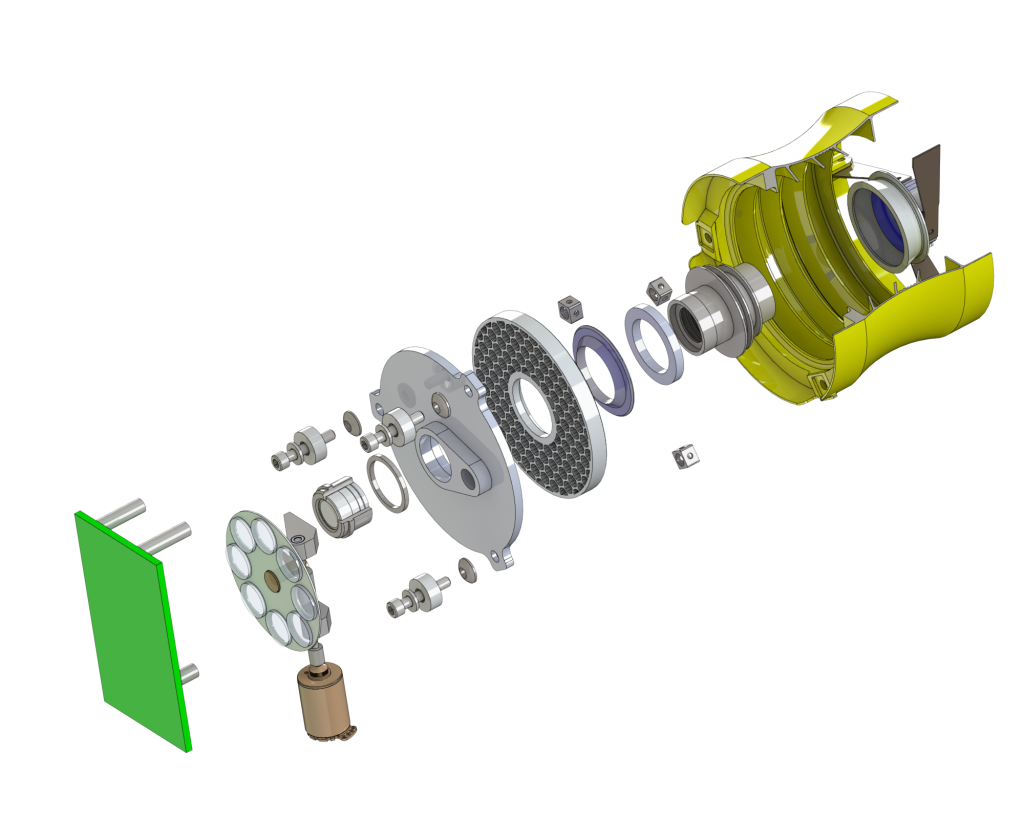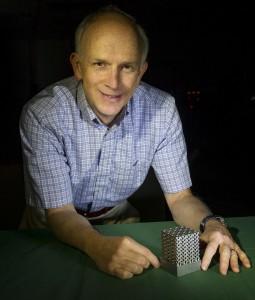NASA has been at the forefront of additive manufacturing technologies for some time now. They already have plans to send a 3D printer to the International Space Station later this year, but have an eventual goal, which  would even make futurist Ray Kurzweil blush. Eventually, NASA would like to use terrestrial soil on the Moon or even Mars to 3D print actual structures, which could act as bases for astronauts on the foreign worlds. Although this is likely decades away, another amazing application of 3D printing by NASA is already under way.
would even make futurist Ray Kurzweil blush. Eventually, NASA would like to use terrestrial soil on the Moon or even Mars to 3D print actual structures, which could act as bases for astronauts on the foreign worlds. Although this is likely decades away, another amazing application of 3D printing by NASA is already under way.
NASA aerospace engineer Jason Budinoff plans to construct an imaging telescope which would function in space, primarily with 3D printed parts. For those unaware, an imaging telescope is used to take pictures of distant objects. The telescope, which is set for completion sometime next month, would have almost all of its components, including the optical mounts, outer tube and baffles 3D printed, all respectively in one piece. It will measure only about two inches in length, and feature mirrors and lenses which have been produced with conventional methods.
Eventually, however, Budinoff hopes to be able to 3D print the mirrors as well, using aluminum powder which has been laser sintered, and then compressed via high pressured gases.
Some may ask, “why would NASA want to 3D print the majority of these telescopes?” The answer is multi-faceted. For one, NASA will soon have a 3D printer in space. Imagine if they could print out imaging telescopes or other advanced devices and parts on demand from raw materials. That’s not all though.
“This is a pathfinder,” Budinoff said. “When we build telescopes for science instruments, it usually involves hundreds of pieces. These components are complex and very expensive to build. But with 3-D printing, we can reduce the overall number of parts and make them with nearly arbitrary geometries. We’re not limited by traditional mill- and lathe-fabrication operations.”
There will only be four 3D printed parts in Budinoff’s telescope, however, these four parts, which were laser sintered from powdered aluminum and titanium, are replacing anywhere from 20-40 conventional parts. Additionally, the parts can be much more complex. For instance the 3D printed baffling is designed in a way which no conventional manufacturing technique could accomplish, meaning it can perform its job of reducing stray light within the instrument, to a greater extent.
“I basically want to show that additive-machined instruments can fly,” Budinoff said. “We will have mitigated the risk, and when future program managers ask, ‘Can we use this technology?’ we can say, ‘Yes, we already have qualified it.’”
Budinoff is far from done with his work. He is also working on a larger 14-inch dual channel telescope, and investigating new materials such as invar alloy, which is basically an iron-nickel alloy.
“Anyone who builds optical instruments will benefit from what we’re learning here,” Budinoff said. “I think we can demonstrate an order-of-magnitude reduction in cost and time with 3-D printing.”
With tremendous cost and time savings like this, it’s no wonder 3D printing is becoming a reality within many businesses and organizations. Let’s hear your thoughts on this incredible use of 3D printing in the 3D printed NASA telescope forum thread on 3DPB.com.
[Source: Nasa.gov]Subscribe to Our Email Newsletter
Stay up-to-date on all the latest news from the 3D printing industry and receive information and offers from third party vendors.
You May Also Like
3D Printing Unpeeled: New Arkema Material for HP, Saddle and Macro MEMS
A new Arkema material for MJF is said to reduce costs per part by up to 25% and have an 85% reusability ratio. HP 3D HR PA 12 S has been...
3D Printing News Briefs, January 20, 2024: FDM, LPBF, Underwater 3D Printer, Racing, & More
We’re starting off with a process certification in today’s 3D Printing News Briefs, and then moving on to research about solute trapping, laser powder bed fusion, and then moving on...
3D Printing Webinar and Event Roundup: December 3, 2023
We’ve got plenty of events and webinars coming up for you this week! Quickparts is having a Manufacturing Roadshow, America Makes is holding a Member Town Hall, Stratafest makes two...
Formnext 2023 Day Three: Slam Dunk
I’m high—high on trade show. I’ve met numerous new faces and reconnected with old friends, creating an absolutely wonderful atmosphere. The excitement is palpable over several emerging developments. The high...

































